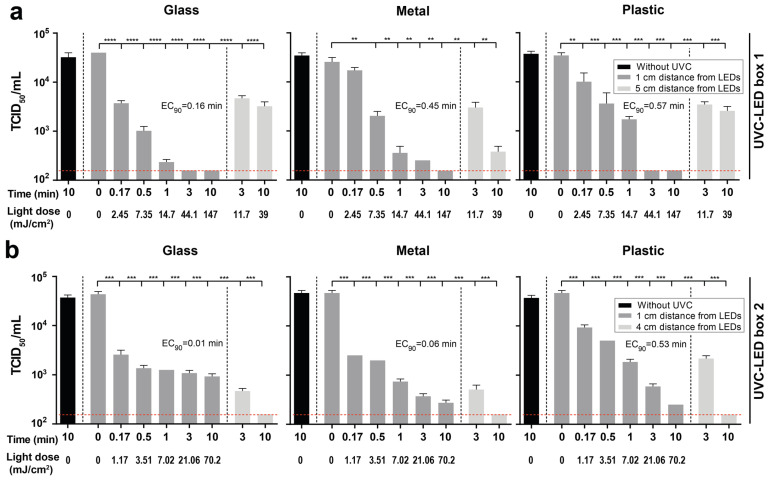Figure 3.
Disinfection of severe acute respiratory syndrome coronavirus 2 (SARS-CoV-2)-contaminated objects by two distinct UVC-LED boxes. Glass, metal, and plastic samples were contaminated with SARS-CoV-2 at a final concentration of 4.5 × 106 TCID50/mL for UVC-LED box 1 and 1.8 × 106 TCID50/mL for UVC-LED box 2 in a cell culture medium mixed with defined organic matrix, thereby mimicking the viral contamination on the surfaces of personal belongings such as smartphones, keys, coins, or credit cards. The samples were exposed to LED-UVC light for 0 s, 10 s, 30 s, 1 min, 3 min, and 10 min at different distances from UVC-LEDs inside the UVC-LED boxes. Experiments were conducted in triplicates. (a) In UVC-LED box 1, samples were irradiated at a distance of 1 and 5 cm from the UVC-LEDs. (b) In UVC-LED box 2, samples were irradiated at 1 and 4 cm from the UVC-LEDs. Light doses at 4 cm distance cannot be shown, as an irradiance measurement of the LEDs at that distance would have required drilling a hole into the bottom of the box, which was not possible without damaging the box. The limit of detection of the assay was at 159 TCID50/mL (indicated by the red dotted line). Data are displayed as mean ± SD. ** p < 0.01; *** p < 0.001; and **** p < 0.0001. TCID50 = tissue culture infectious dose, 50%; EC90 = 90% effective concentration.

